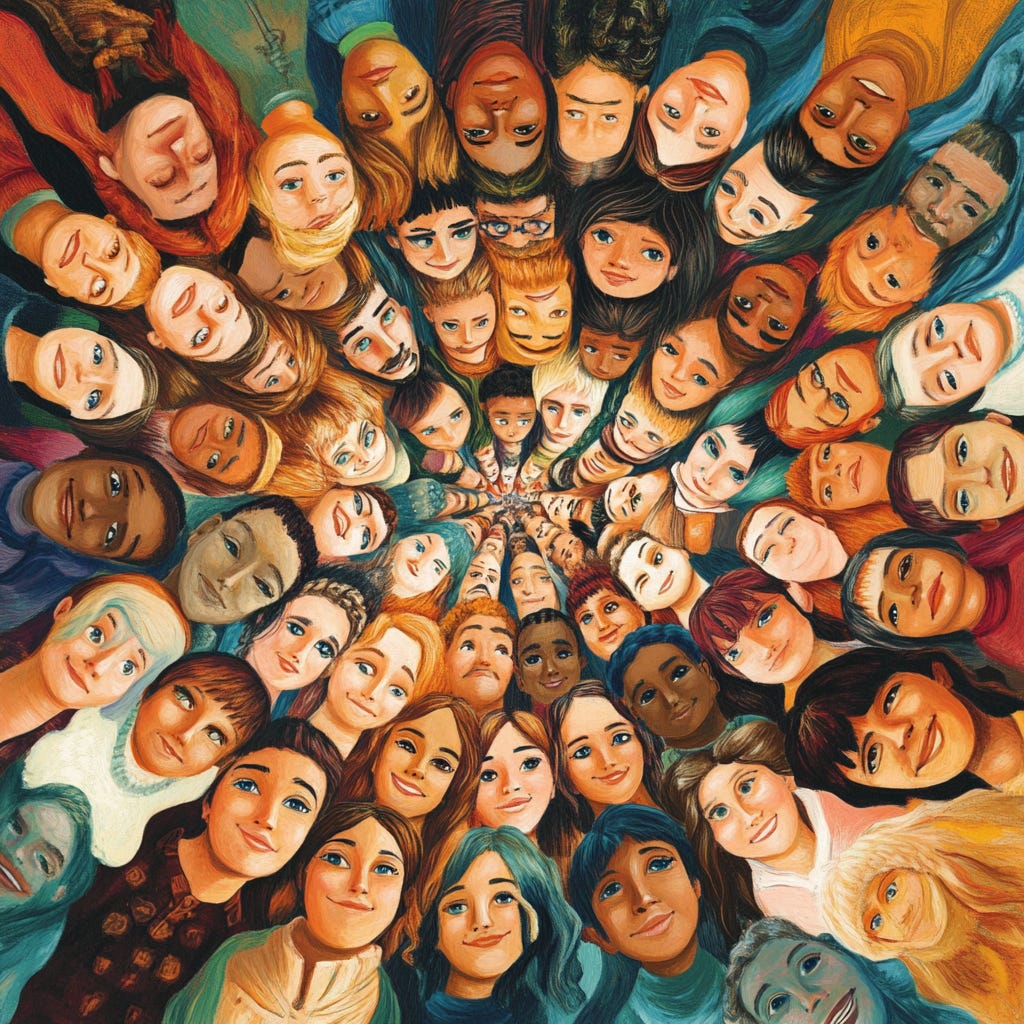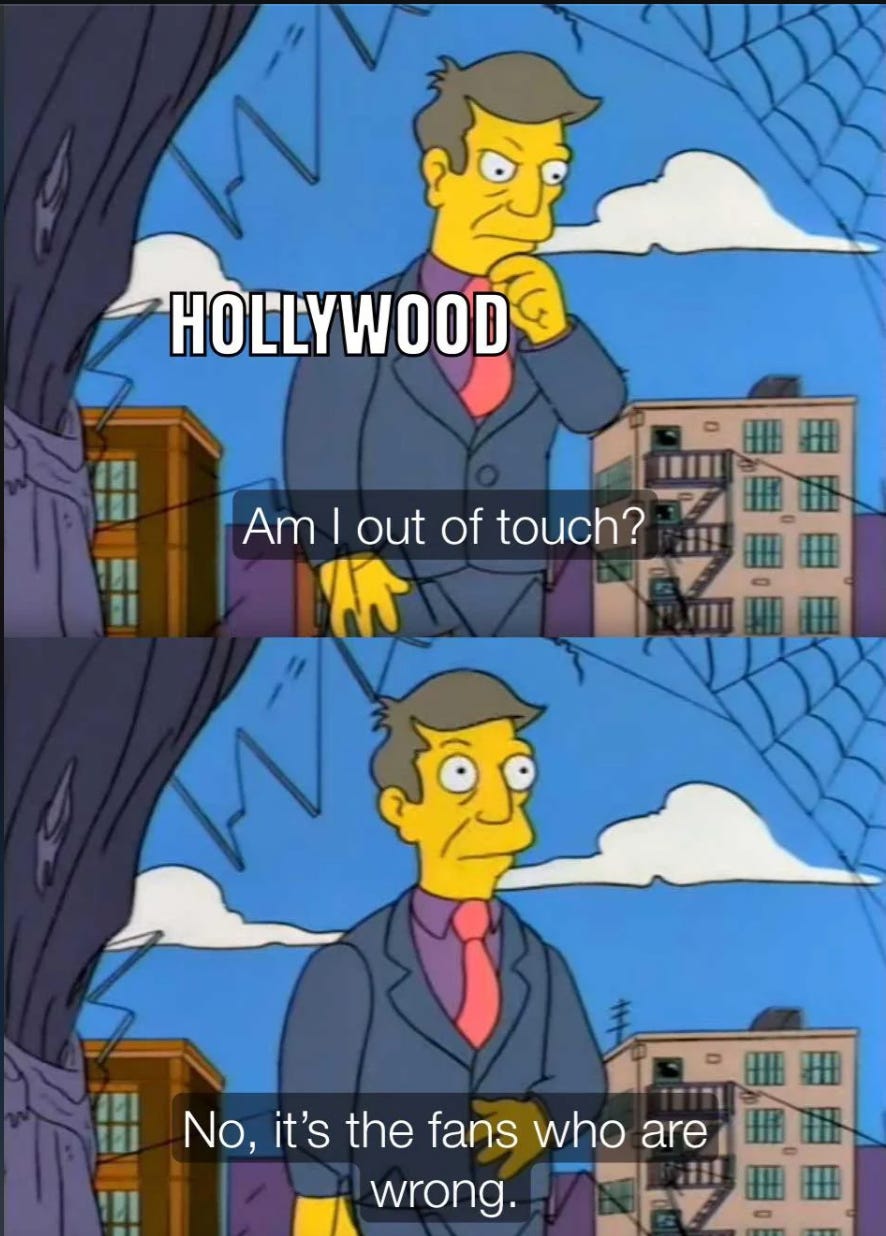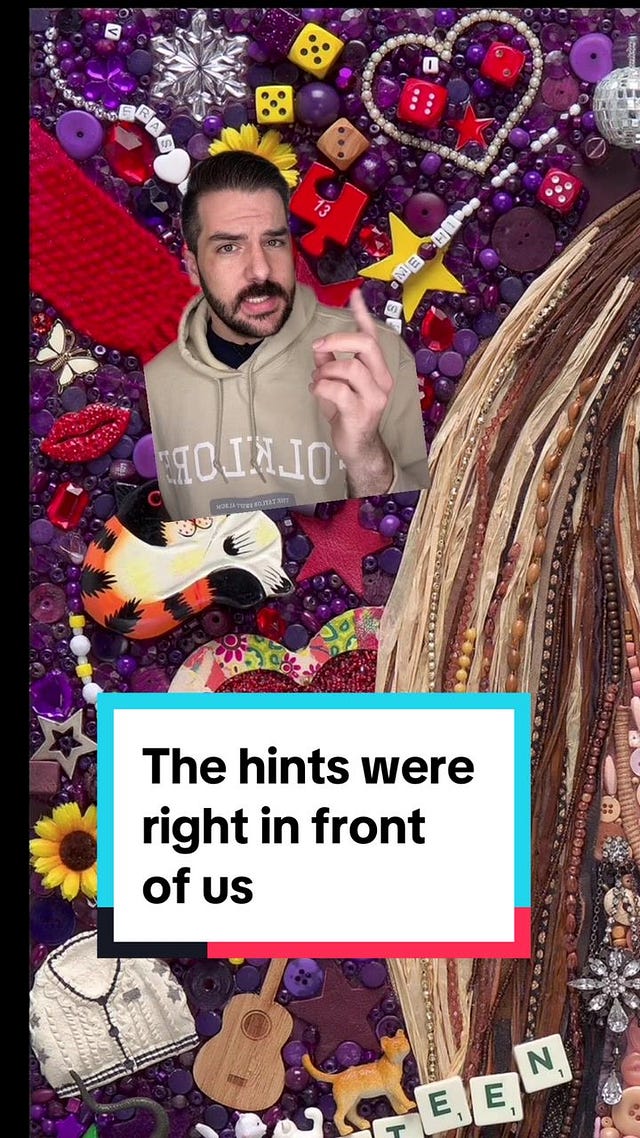Legacy media needs to look more like social media.
In the old days—let’s call it BS, Before Socials—Hollywood created culture. It was the center of the entertainment flywheel. It could make a piece of content, market it, and bring an audience.
Now?
Audiences expect to participate. They expect to engage. They expect to belong.
They want community.
As a producer, I started waking up to this a few years ago. We had shows that were working and building fanbases. And with some resources, we had the capability to turn fans into a community. And yet… I couldn’t get the execs at the legacy business to care. Their model didn’t allow for it. It didn’t fit in their marketing budget. Communities need attention.
You must be in constant dialogue with them. All The Time.
The ones who understand this shift are winning (and some do). The ones who don’t are still pumping millions into billboards, wondering why no one is watching.
The entertainment industry doesn’t have a content problem.
It has a connection problem.
The Moment It Clicked for Me
A few years ago, I met a woman who had worked at Netflix as a community builder. She had just returned from a multi-city tour where she was screening a movie for local creators and then getting them into dialogue with each other.
She wasn’t just marketing a film. She was activating a community around it.
I was fascinated. And I had a question: What if I could build something that started with community, instead of trying to graft one on later?
What if, instead of making a movie or series and hoping people showed up, I could walk it into a platform where the conversation was already happening?
Because that’s exactly what creators do all the time. They test ideas. They engage their communities. They A/B test things.
Hollywood throws projects into the void and hopes for an audience. Creators build the audience first, then deliver the content.
Netflix understands this. When they launched Squid Game, they leaned into existing global fandoms around Korean dramas and survival game tropes. It wasn’t just a great show—it was something people were primed to talk about. The same happened with Wednesday—they knew goth culture, Addams Family nostalgia, and TikTok would carry it forward.
That’s the real difference: movies and TV shows shouldn’t just be content—they should be conversation starters.
Skibidi Toilet started as a meme craze. It has now grown into a Youtube channel with over 65 billion views and 25 seasons worth of content. Michael Bay has teamed with the former head of Paramount to adapt the concept for a film or tv series.
The Difference Between a Fan and a Community
A fan is someone who enjoys a piece of content. They’ll watch a show, listen to an album, maybe buy some merch. Their engagement is transactional. It starts and ends with the content itself.
A community is something much deeper. It’s a self-sustaining ecosystem where fans connect, create, and amplify each other’s enthusiasm.
A community isn’t just watching—it’s participating. It’s theorizing, remixing, spreading content organically. It doesn’t disappear after a season finale or a movie premiere. It grows and evolves.
That’s why Taylor Swift doesn’t just release albums—she drops Easter eggs, leaves trails of breadcrumbs, and makes every fan feel like a detective in a sprawling, ongoing mystery.
Or go to the OGs of community—the Grateful Dead. They haven’t released a new album in decades, yet Deadheads still thrive, passing their music down like religious texts.
But my favorite and most relevant example is a young woman named Vivienne Medrano, aka VivziePop—she turned YouTube shorts into a major Amazon Prime series by building a community online. And she’s KILLING IT.
I bet she’s making more on merch than most show-runners make for a season of the most premium TV…
And then there’s Netflix, which might not look like a traditional community-builder but understands how to create global cultural moments that feel like movements. Shows like Stranger Things, Squid Game, and Wednesday don’t just rack up views—they spark massive online conversations, TikTok trends, and fan theories that keep audiences engaged long after the credits roll.
The MrBeast Wake-Up Call
Amazon’s recent purchase of Beast Games was a moment of clarity and a dangerous proposition.
They wanted the BIGGEST creator to bring the BIGGEST audience. (BTW—from all the analysis we’ve seen, it’s working decently, and we’re going to deep dive into this show in another blog).
It revealed that platforms know they need to align themselves with creators who own their audiences (duh).
But THINKING BIG shouldn’t be the only way to attack. There is enormous value in looking at the rich mid-tier creator space—where entire subcultures exist, ready to be activated.
Netflix figured this out early. They didn’t just buy big IP—they tapped into existing global niches and hyper-engaged fandoms. They turned a Danish crime thriller (The Rain), a German sci-fi mystery (Dark), and a Spanish heist show (La Casa de Papel) into worldwide sensations—all by recognizing latent communities that were waiting to be unlocked.
And it’s not just about partnering with individual creators. It’s about seeking out vibrant, existing communities and bringing them into the storytelling process. It’s about figuring out how fandoms operate and then working with them, not just selling to them.
The Future: Build Communities, Not Just Content
The best thing Hollywood could do right now isn’t another franchise reboot. It’s figuring out how to merge top-tier storytelling with community-driven engagement.
A show or film that succeeds in the traditional model gets its moment, then fades.
A project that taps into a real community lives on, grows, and becomes something bigger than the content itself.
That’s why I keep thinking about that conversation with the Netflix exec. She wasn’t just marketing content—she was building culture around it.
So how do we, as producers and executives, flip the model?
Instead of making something and praying an audience finds it, how do we bring an audience into the process from the start?
How do we test, tweak, and evolve ideas with the community before the cameras ever roll?
Because creators already do this. They know what works before they even hit upload. They engage, adjust, and build demand before the product even exists.
Hollywood needs to catch up.
It’s why streaming platforms are finally looking toward creators with pre-existing communities rather than relying on an expensive bet that audiences might show up.
The future belongs to those who build movements, not moments.
The one thing more valuable than a blockbuster isn’t a sequel.
It’s an audience that keeps coming back—not just because they love the content, but because they belong to it.









'Zactly
Very insightful and definitely thought-provoking. It's like talking to you, Ben. Keep'em coming and congrats to the team!